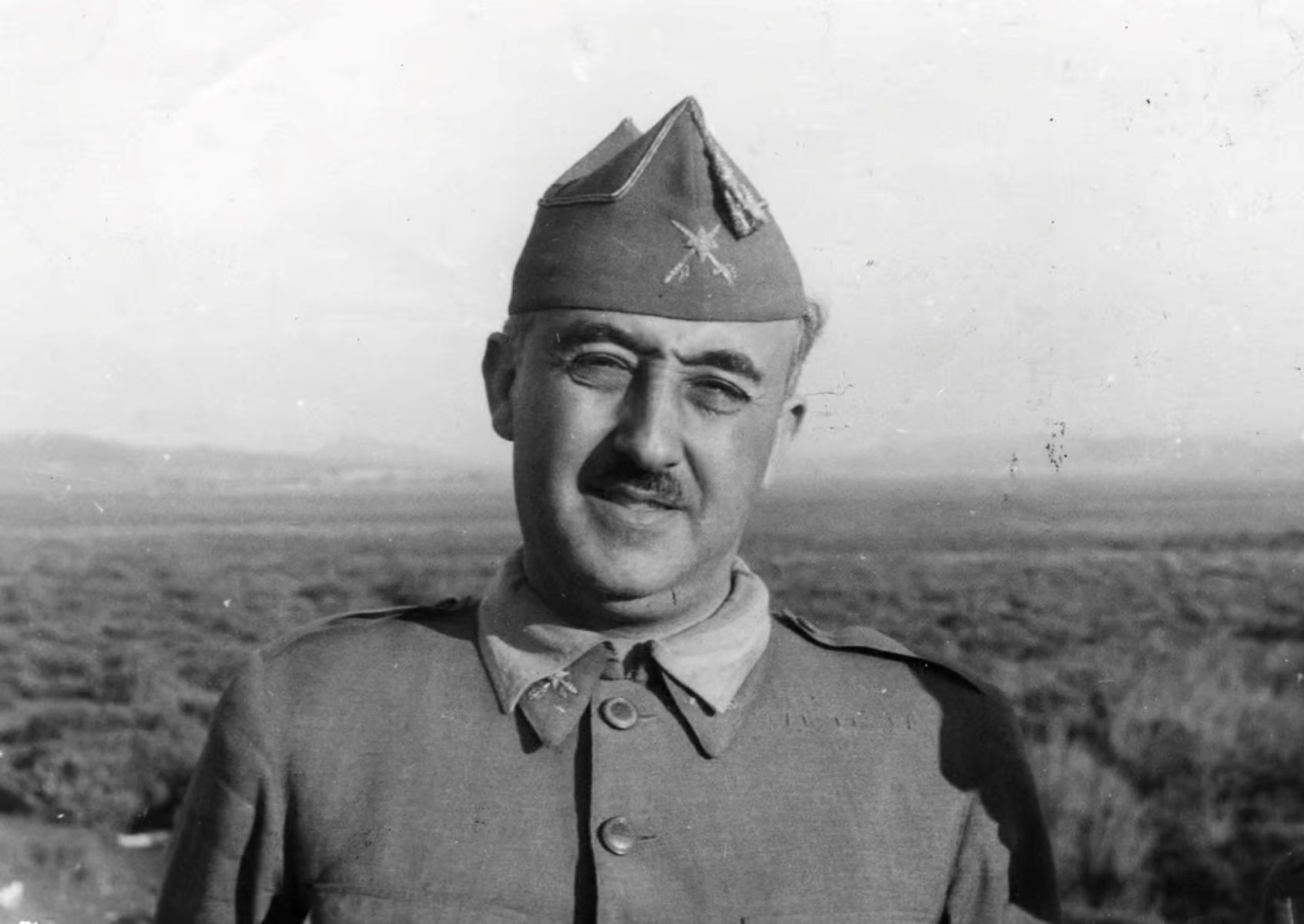
Few historical figures have garnered as much controversy and intrigue as Francisco Franco, the Spanish dictator who ruled the country with an iron fist from 1939 until his death in 1975. Franco’s regime, known as Francoist Spain, shaped the country’s political landscape and left a lasting impact on its society.
In this article, we delve into the enigmatic persona of Francisco Franco and bring to light 16 fascinating facts about his life, rule, and legacy. From his rise to power during the Spanish Civil War to his iron-fisted regime, we’ll explore the lesser-known aspects of Franco’s reign.
Whether you view Franco as a ruthless dictator or a skilled politician, there is no denying the significance of his rule in shaping modern Spain. So, join us as we unravel the mysteries surrounding Francisco Franco and shed light on the controversial figure whose impact is still felt to this day.
Key Takeaways:
- Franco ruled Spain with an iron grip for almost 40 years, shaping the country’s history and leaving a lasting impact on its political institutions.
- Franco’s regime brought economic stability but at the cost of political freedom, sparking ongoing debates about his legacy and influence on Spain’s modern society.
Franco ruled over Spain for nearly four decades.
One of the most striking aspects of Franco’s reign was its longevity. From 1939 until his death in 1975, he held a tight grip on power, establishing a centralized authoritarian regime.
Franco’s military career shaped his leadership style.
Before his rise to power, Franco had a successful military career, which influenced his leadership approach. His authoritarian rule mirrored the discipline and hierarchy of the military.
Franco declared himself Head of State and Generalissimo.
Upon the victory of his Nationalist forces in the Spanish Civil War, Franco proclaimed himself as the Head of State and took on the title of Generalissimo, solidifying his position as the leader of Spain.
The name “Francisco Franco” was a fusion of his father and mother’s surnames.
Francisco Franco’s full name was Francisco Paulino Hermenegildo Teódulo Franco Bahamonde. His choice of a combined surname was an unusual practice during that time.
Franco imposed a regime of censorship and repression.
Under Franco’s rule, Spain experienced strict censorship, with tight control over the media and freedom of expression. Dissent and opposition were heavily repressed.
Franco had a complex relationship with fascist ideologies.
While often associated with fascism, Franco’s regime did not align itself directly with any particular ideological movement. His brand of authoritarianism had elements of both right-wing authoritarianism and traditionalism.
Franco instituted a policy of Spanish cultural and linguistic homogeneity.
During his regime, Franco promoted the use of Castilian Spanish as the main language and suppressed regional languages and cultures, aiming to create a unified and centralized Spain.
The “Valle de los Caídos” monument was constructed under Franco’s orders.
The Valley of the Fallen, as it is known in English, is a controversial monument near Madrid created to honor the fallen soldiers of the Spanish Civil War. Critics argue that it also serves as a symbol of Franco’s regime.
Franco’s rule brought economic stability but at the cost of political freedom.
Under Franco’s economic policies, Spain experienced a period of stability and industrial growth. However, this economic development was accompanied by the absence of political democracy and civil liberties.
Franco’s death sparked a transition to democracy known as the “Transition.”
Franco’s death in 1975 marked the beginning of Spain’s transition to democracy, which involved significant political and social changes over the following years.
Franco’s body was moved from the Valley of the Fallen in 2019.
After years of controversy, Franco’s remains were exhumed from the Valley of the Fallen and transferred to a public cemetery, reflecting a symbolic step towards reckoning with Spain’s past.
Franco’s regime left a lasting impact on Spain’s political institutions.
The political structures established during Franco’s rule continued to shape Spain’s democracy, with some arguing that remnants of the regime still exist within the country’s institutions.
Franco’s actions during World War II remain a subject of debate.
While Franco officially maintained neutrality during World War II, there are ongoing debates about his role and connections with the Axis powers.
Franco received support from Nazi Germany and Fascist Italy during the Spanish Civil War.
The Nationalist forces led by Franco received military aid from both Nazi Germany and Fascist Italy, which played a significant role in their victory over the Republican forces.
Franco’s family members held influential positions in his regime.
Several members of Franco’s family occupied important positions within his regime, consolidating the notion of Franquismo as a family affair.
The legacy of Franco remains divisive in Spain.
Even decades after his death, opinions on Franco’s legacy continue to be deeply divided. The memory of his regime and the lasting impact it had on Spain’s history create ongoing discussions and debates.
Conclusion
In conclusion, Francisco Franco was a complex and enigmatic figure in Spanish history. His regime, which lasted for almost four decades, left a lasting impact on the country. From his rise to power during the Spanish Civil War to his authoritarian rule and implementation of nationalist policies, Franco’s legacy is still a topic of debate and scrutiny.While some view him as a savior who preserved Spanish traditions and prevented the country from descending into chaos, others criticize his repression of political dissent and suppression of regional identities. Regardless of one’s perspective, it is undeniable that Franco played a significant role in shaping Spain’s socio-political landscape during his tenure.Understanding the enigmatic nature of Francisco Franco requires a deep dive into the historical context and the different perspectives surrounding his rule. By exploring the various facets of his life and regime, we can gain a more nuanced understanding of this controversial figure and the impact he had on Spain.
FAQs
Q: What was Francisco Franco’s role in the Spanish Civil War?
A: Francisco Franco played a crucial role in the Spanish Civil War. He led the nationalist faction, which opposed the Republican government, and ultimately emerged victorious, thus establishing his position as the leader of Spain.
Q: How long did Francisco Franco rule?
A: Francisco Franco ruled Spain for nearly four decades, from 1939 until his death in 1975.
Q: What were some of the key policies implemented by Franco?
A: Franco implemented a series of nationalist policies aimed at centralizing power, suppressing regional identities, and promoting a conservative socio-political agenda. This included the repression of political dissent, censorship of the media, and the promotion of Spanish nationalism.
Q: Did Franco have any international allies?
A: During his rule, Franco maintained close ties with fascist regimes such as Nazi Germany and Italy under Mussolini. However, as the Second World War progressed, Franco sought to distance Spain from the conflict and adopted a policy of neutrality.
Q: How is Francisco Franco remembered today?
A: Francisco Franco is remembered as a controversial figure in Spanish history. While some still revere him as a national hero, others criticize his authoritarian rule and the human rights abuses committed under his regime. Spain continues to grapple with how to approach its Francoist past and reconcile the conflicting perspectives on his legacy.
Intrigued by Franco's enigmatic life? Explore more captivating stories from history, like Ernest Hemingway's classic novel set during the Spanish Civil War, the rise and fall of dictatorships around the world, or the shocking truths about Italy's notorious fascist leader, Benito Mussolini. Each tale offers a unique glimpse into the complexities of power, ideology, and the human experience. So, which fascinating journey will you embark on next?
Was this page helpful?
Our commitment to delivering trustworthy and engaging content is at the heart of what we do. Each fact on our site is contributed by real users like you, bringing a wealth of diverse insights and information. To ensure the highest standards of accuracy and reliability, our dedicated editors meticulously review each submission. This process guarantees that the facts we share are not only fascinating but also credible. Trust in our commitment to quality and authenticity as you explore and learn with us.


